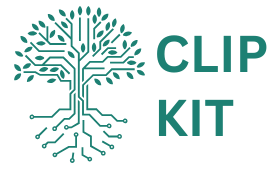Table of Contents
ToggleIn a world where instant gratification reigns supreme, chatbots have become the unsung heroes of customer service. They’re like the friendly barista who knows your order before you even step up to the counter—except they don’t spill coffee on your shoes. Building a chatbot isn’t just a techie dream; it’s a savvy move for businesses looking to boost efficiency and engagement.
Imagine having a tireless assistant that never sleeps, always ready to answer questions, solve problems, and even crack a joke or two. Crafting your own chatbot can transform your customer interactions from mundane to magical. So why not dive into the world of chatbot creation? It’s easier than you think, and who knows? You might just end up with the next viral digital sensation.
Overview of Chatbots
Chatbots play a crucial role in modern customer service strategies. These automated programs engage with users, providing assistance and information around the clock.
What Is a Chatbot?
A chatbot is a software application designed to simulate human conversation. Utilizing natural language processing, it interacts with users via text or voice commands. Businesses deploy chatbots to manage customer inquiries, support tasks, and even offer product recommendations. Users appreciate the accessibility of chatbots, as they provide immediate responses without human intervention.
Types of Chatbots
Various types of chatbots exist, tailored to different needs. Rule-based chatbots follow predefined scripts, making them predictable but limited in complexity. AI-driven chatbots leverage machine learning and natural language processing for more sophisticated interactions. Additionally, some chatbots integrate across multiple platforms, serving customers on websites, social media, and messaging applications. Each type serves distinct functions, allowing businesses to choose based on their specific requirements.
Steps To Build a Chatbot

Creating a chatbot involves a systematic approach to ensure effectiveness and user satisfaction. The following steps outline the process to build a successful chatbot.
Defining Purpose and Use Cases
Start by identifying the specific tasks the chatbot will handle. Recognize potential use cases such as customer support, lead generation, or appointment scheduling. An understanding of target users enhances chatbot relevance. Analyze common user inquiries and pain points to tailor capabilities effectively. Prioritize these elements, ensuring the chatbot adds value to both users and the business.
Choosing the Right Platform
Select a platform that aligns with your chatbot’s purpose. Evaluate options like popular chatbot development tools, including Dialogflow, Microsoft Bot Framework, or Chatfuel. Each platform offers unique features and compatibility with various messaging channels. Consider integration possibilities, ease of use, and pricing models when making the choice. It’s essential to assess the platform’s scalability to accommodate future needs.
Designing Conversations
Craft conversations that feel natural and engaging to users. Begin with a clear structure that includes greetings, responses, and closing messages. Use simple language and anticipate user inputs to create a smooth interaction flow. Incorporate prompts to guide users towards desired actions, enhancing the overall experience. Testing different conversational paths helps refine messaging and improves user satisfaction.
Developing the Chatbot
Begin the development phase by setting up the chosen platform. Configure back-end systems to manage data and handle user interactions effectively. Program the chatbot’s responses based on anticipated user questions and scenarios. Implement machine learning features to enable the bot to learn from user interactions and improve over time. Regular testing and updates will ensure the chatbot remains effective and relevant, adapting to changing user needs.
Tools and Technologies
Selecting the right tools and technologies is crucial for building an effective chatbot. Different frameworks and integrations can significantly impact functionality and user experience.
Popular Chatbot Development Frameworks
Frameworks like Dialogflow, Microsoft Bot Framework, and Rasa stand out in the chatbot development landscape. Dialogflow offers a user-friendly interface, making it accessible for developers and non-developers alike. Microsoft Bot Framework supports various programming languages and integrates well with Microsoft services. Rasa provides flexibility in designing custom solutions, appealing to organizations needing tailored responses. Each platform allows for unique features, which assists in scalability and adaptation to specific business needs.
AI and Machine Learning Integration
Integrating AI and machine learning brings advanced capabilities to chatbots. Natural language processing enables chatbots to understand user inquiries better, making interactions more human-like. Tools such as TensorFlow and IBM Watson enhance machine learning components. Companies leveraging these technologies experience improved response accuracy and user engagement. Implementing these advanced systems positions chatbots to evolve, adapting to user behavior and preferences over time.
Testing and Deployment
Testing ensures a chatbot delivers a seamless user experience. Issues such as misunderstanding queries or failing to provide accurate responses can frustrate users. Comprehensive testing identifies these weaknesses, allowing for adjustments that enhance performance. Automated testing tools can simulate user interactions, helping to analyze flow and effectiveness. User feedback plays a crucial role, highlighting areas that need improvement. Regular updates maintain the chatbot’s relevance and efficiency over time.
Importance of Testing
Testing is crucial for any chatbot to function effectively. The process uncovers bugs and optimizes conversation flows, adapting to user preferences. Without rigorous testing, a chatbot risks providing incorrect information, leading to dissatisfied users. A structured testing plan includes functionality checks, usability tests, and performance assessments. Analyzing interactions helps in refining responses to match user expectations. Monitoring after deployment ensures ongoing quality through real-time data analysis.
Launching Your Chatbot
Launching a chatbot involves strategic planning to ensure its success. Pre-launch testing validates functionality and user experience is key. Selecting the right time for rollout maximizes visibility and user engagement. Informing users about the chatbot through marketing channels creates anticipation. Monitoring initial interactions allows for quick adjustments based on user feedback. Engaging users with guides or FAQs helps them adapt to the new tool. Post-launch analytics provide insights into performance, guiding future improvements.
Best Practices for Chatbot Development
Building an effective chatbot requires attention to several best practices that enhance its functionality and user appeal. Prioritizing user experience plays a crucial role in development.
User Experience Considerations
Designing easy-to-navigate conversations improves user satisfaction. Clear language enhances understanding, reducing frustration during interactions. Integrating intuitive prompts aids in guiding users smoothly through the conversation. Feedback loops should provide users with responses and options to clarify their inquiries. Incorporating visuals, such as buttons or quick replies, encourages engagement and speeds up access to information. Testing different user scenarios ensures the chatbot can handle various interactions adeptly. Listening to user feedback fosters continuous improvement and more human-like exchanges.
Maintaining and Updating Your Chatbot
Regular maintenance ensures a chatbot delivers consistent performance. Monitoring interactions uncovers persistent issues and opportunities for enhancement. Updating knowledge bases with new information keeps responses accurate and relevant. Implementing user analytics reveals engagement patterns, guiding necessary adjustments. Scheduling periodic reviews of the chatbot’s functionalities helps identify potential dead ends or conversation gaps. Engaging users in feedback sessions also promotes a culture of continuous enhancement. Ensuring the chatbot adapts to evolving customer needs maximizes its effectiveness and relevance.
Building a chatbot is more than just a technical task; it’s a strategic move that can significantly enhance customer interactions. By understanding users and implementing the right tools, businesses can create chatbots that not only respond to inquiries but also engage customers in meaningful ways.
With the right approach, a well-designed chatbot can streamline operations and improve satisfaction. As technology evolves, staying updated with advancements in AI and machine learning will ensure chatbots remain effective and relevant. Investing time and resources into chatbot development is a step towards a more efficient and customer-centric future.




